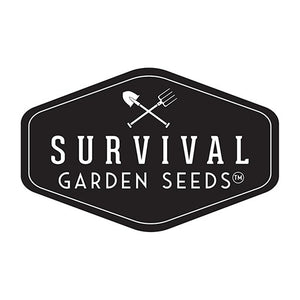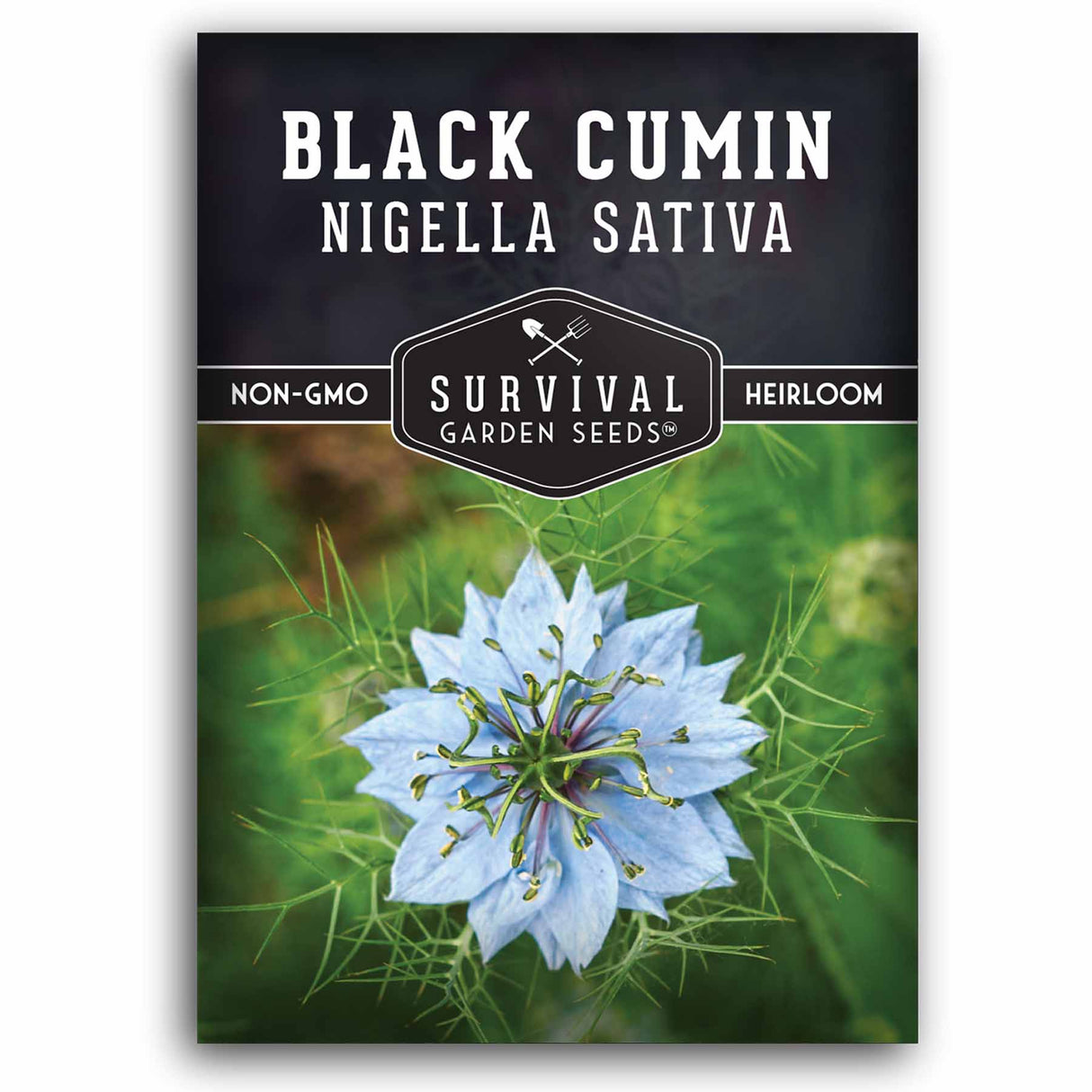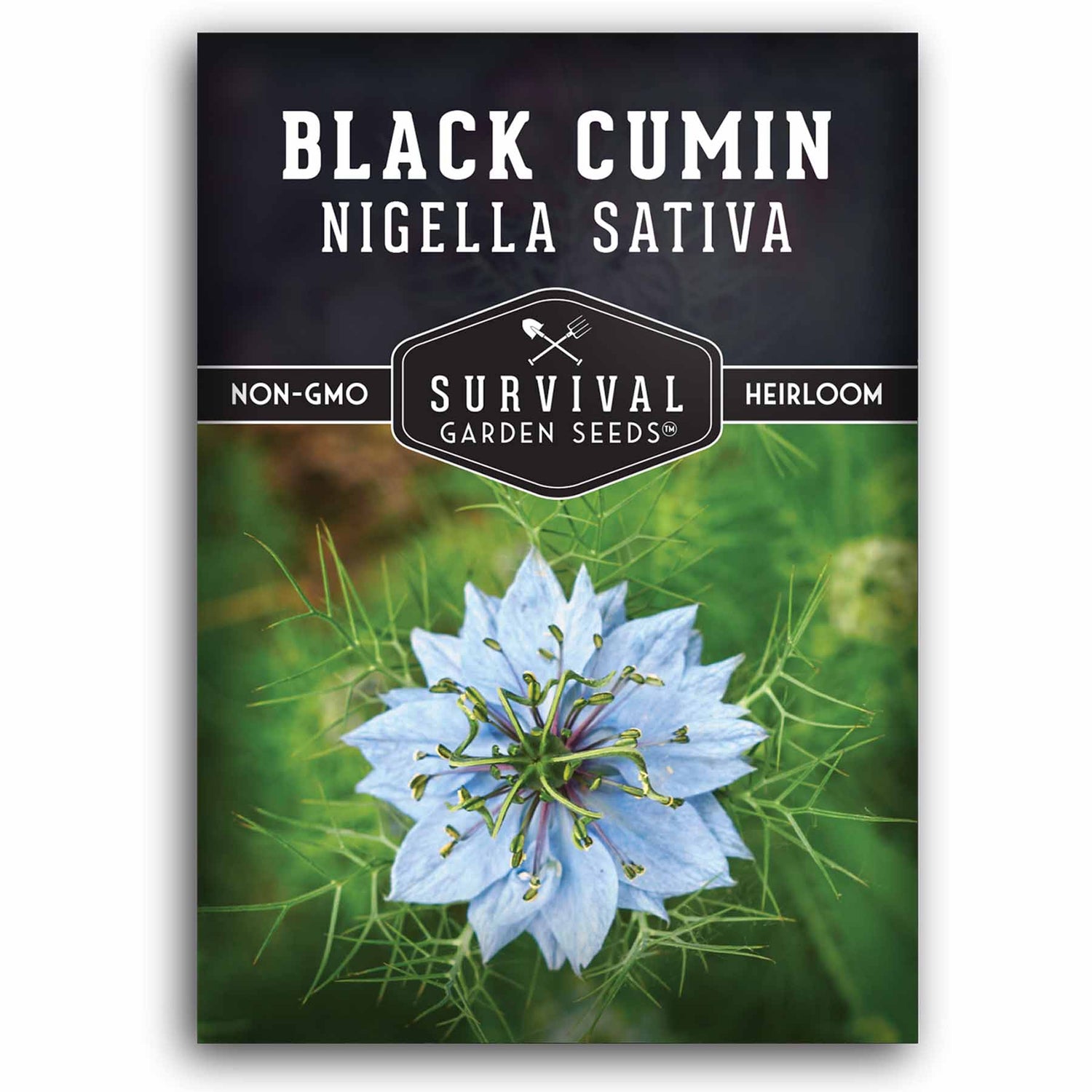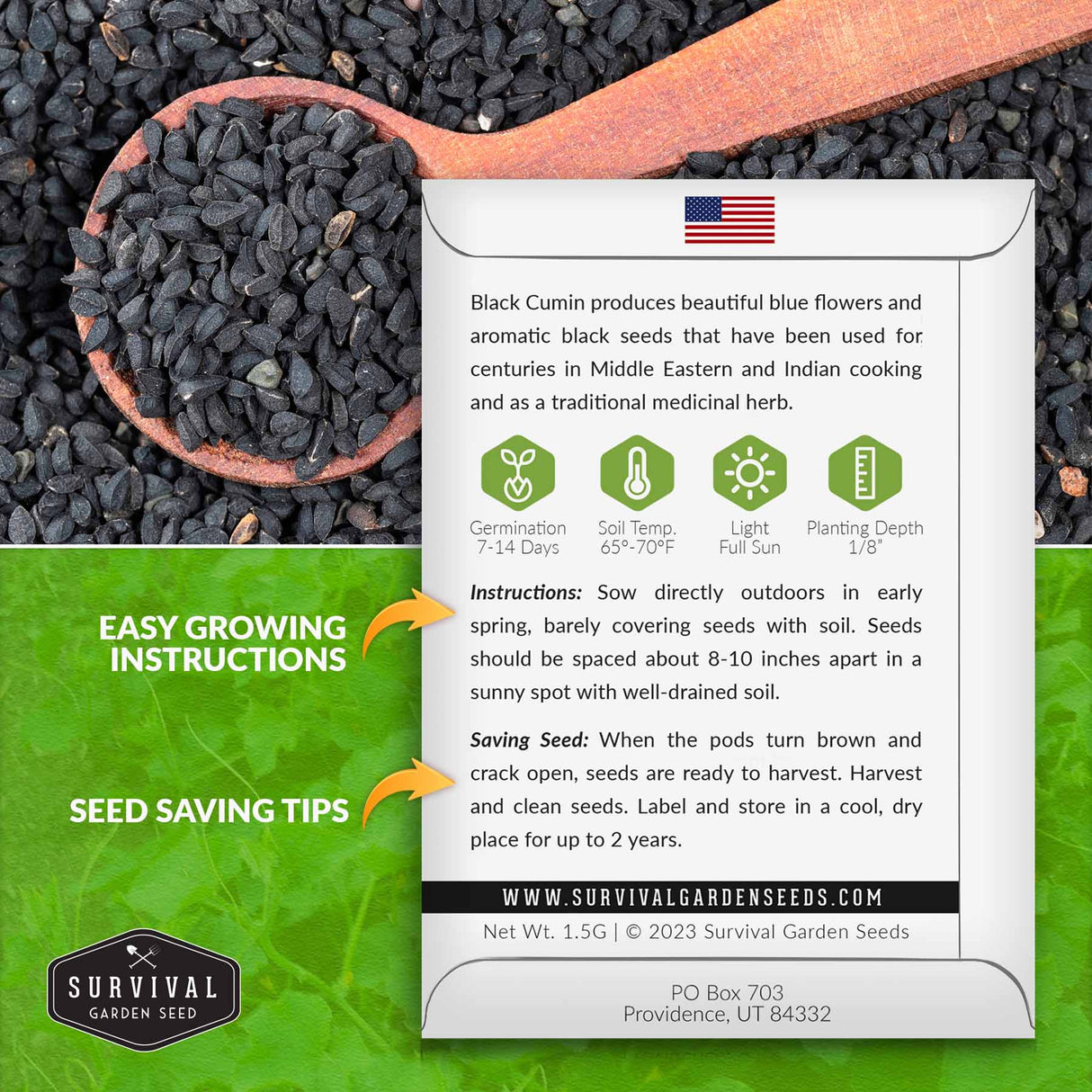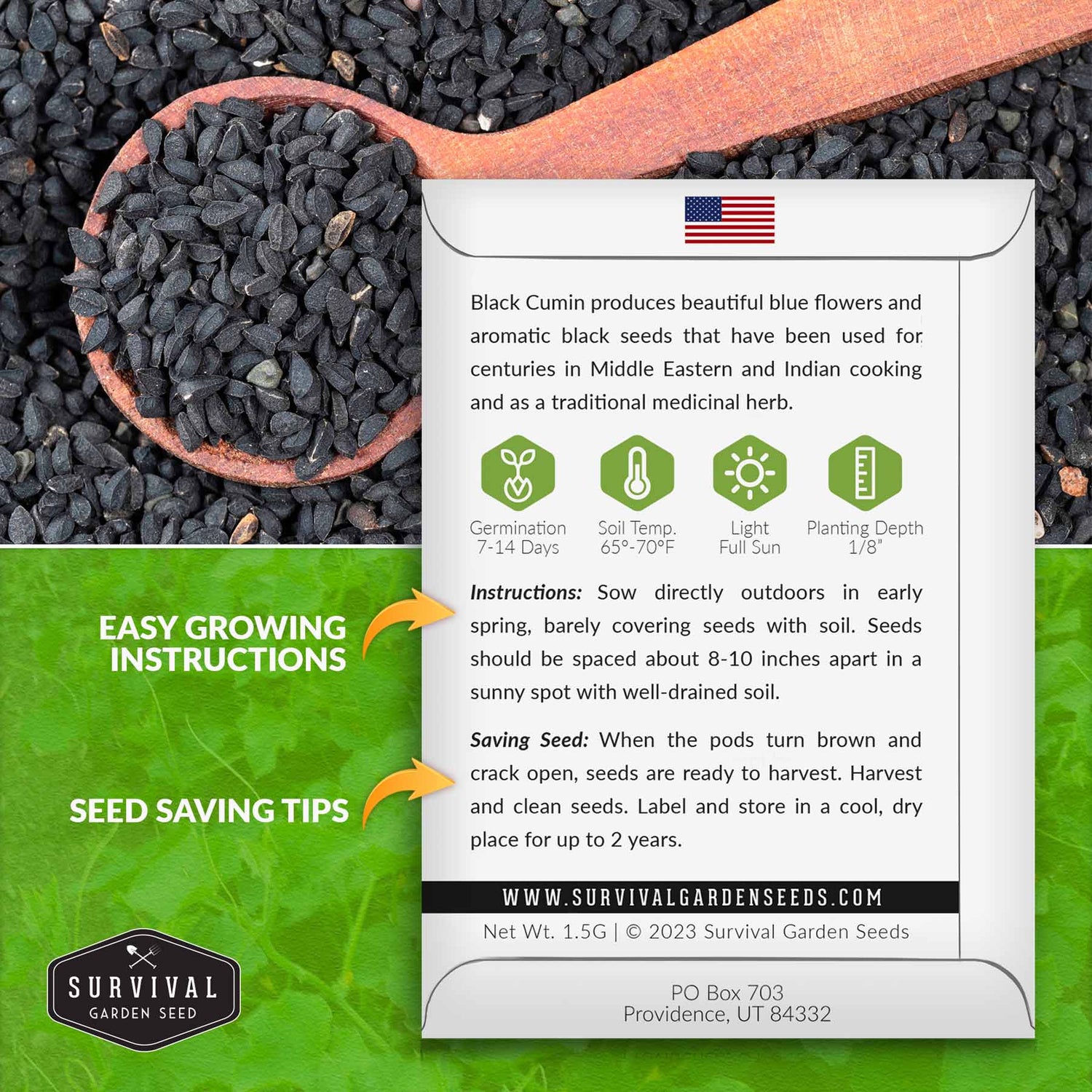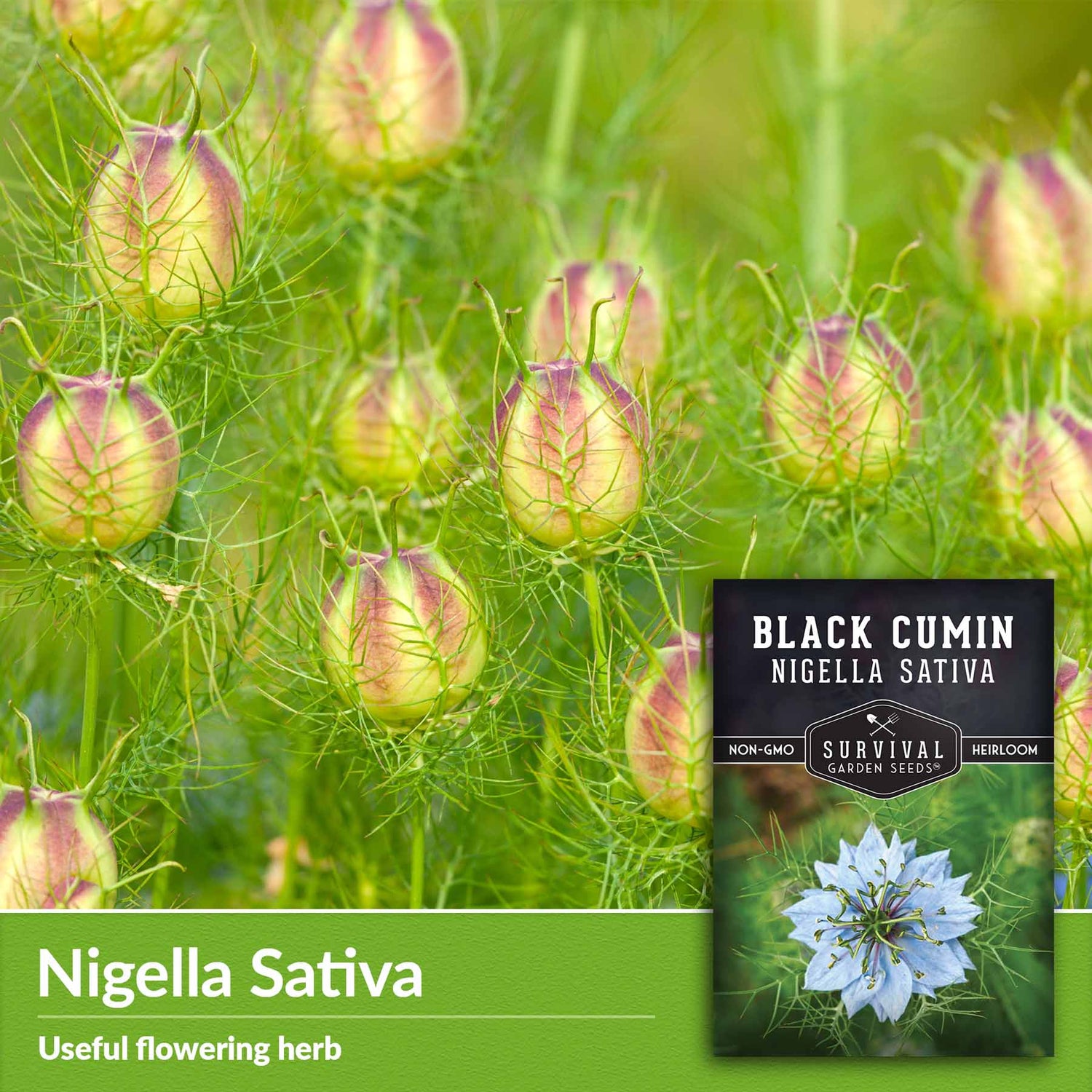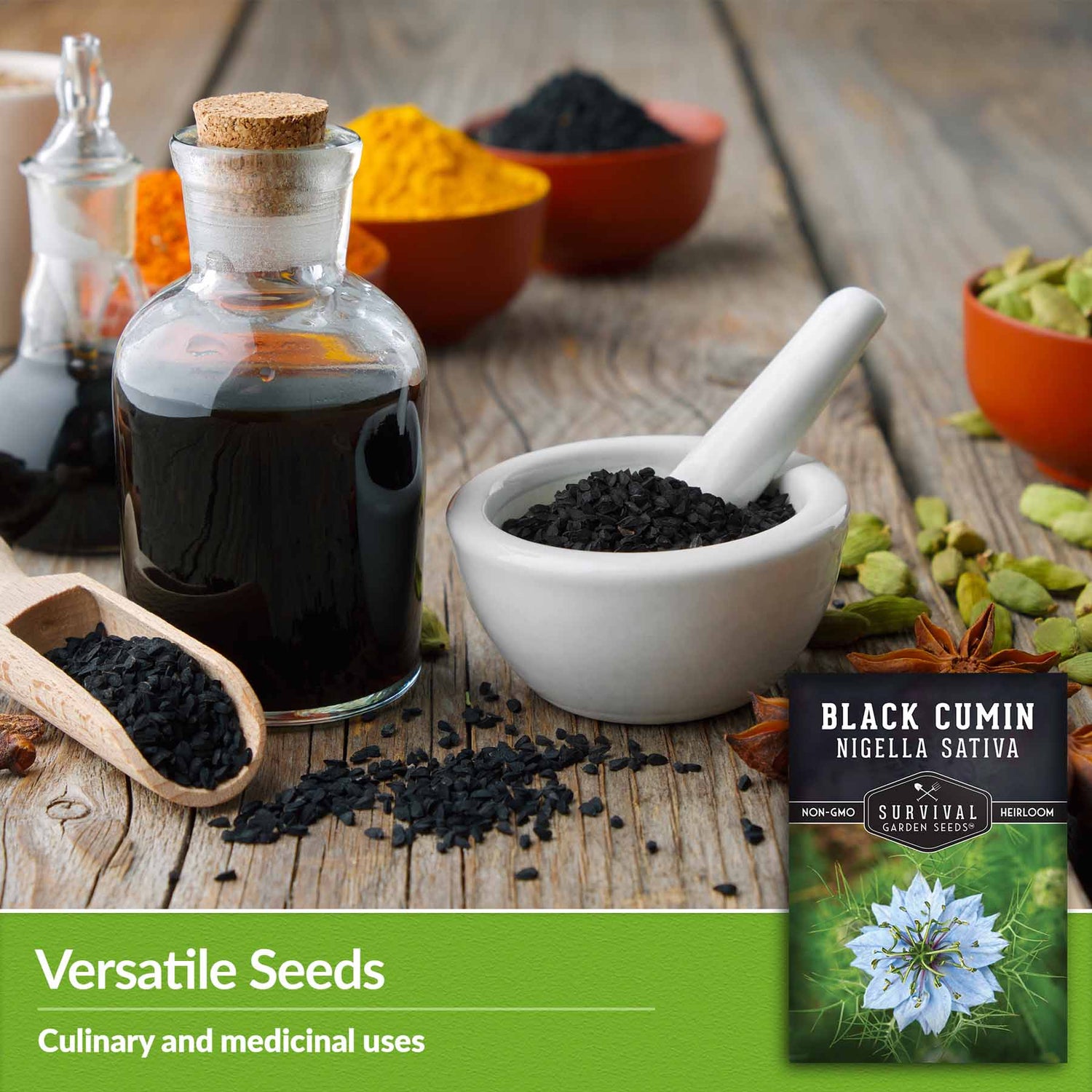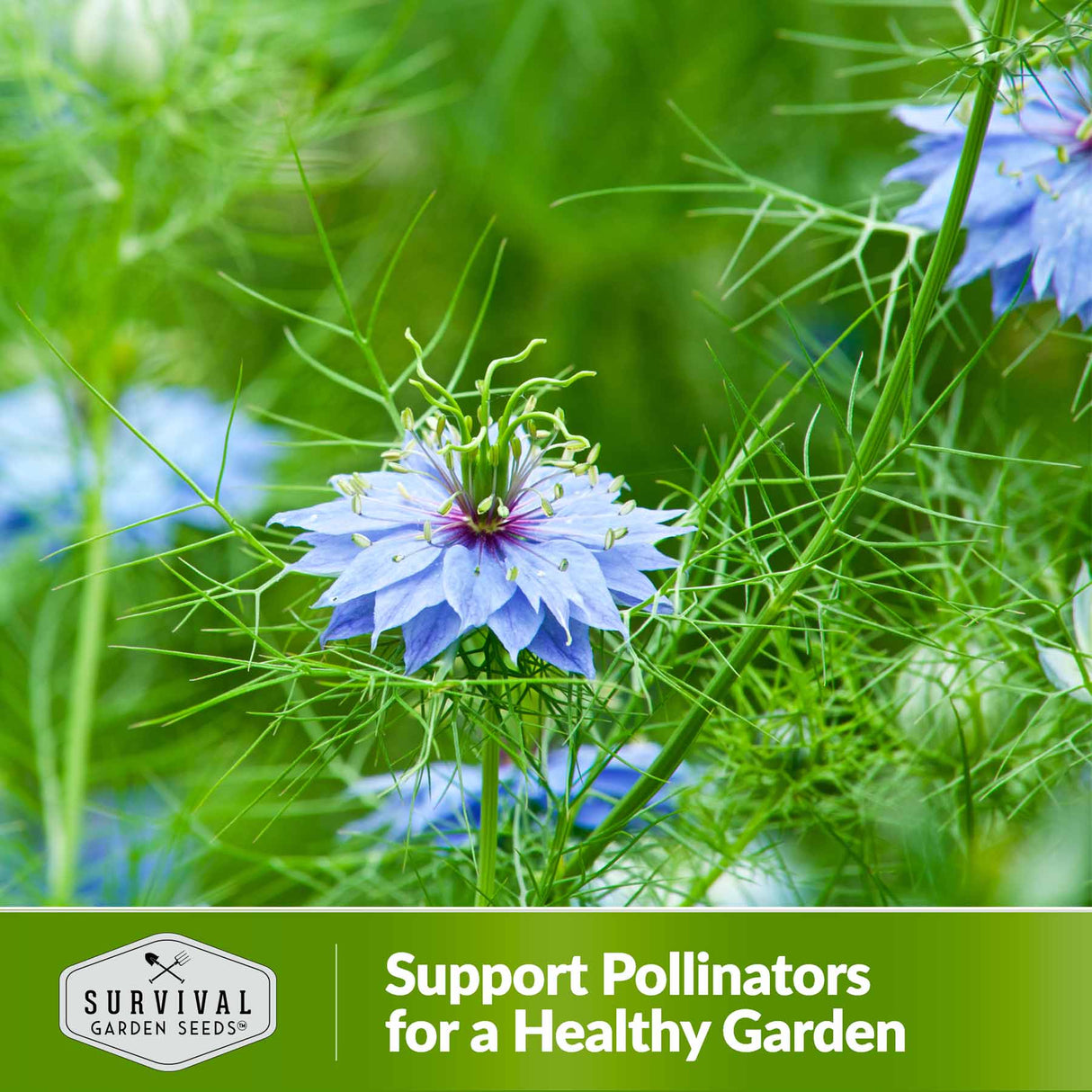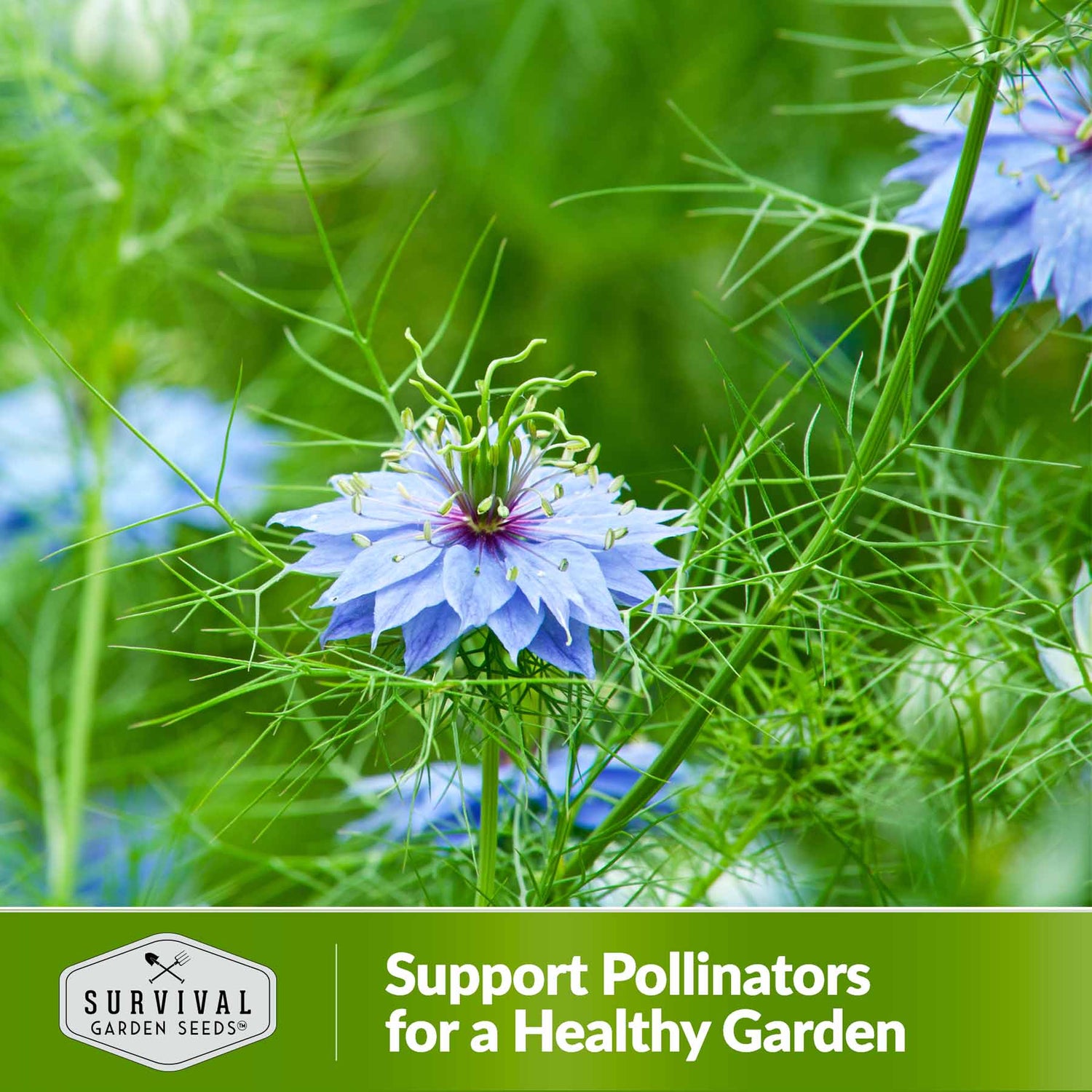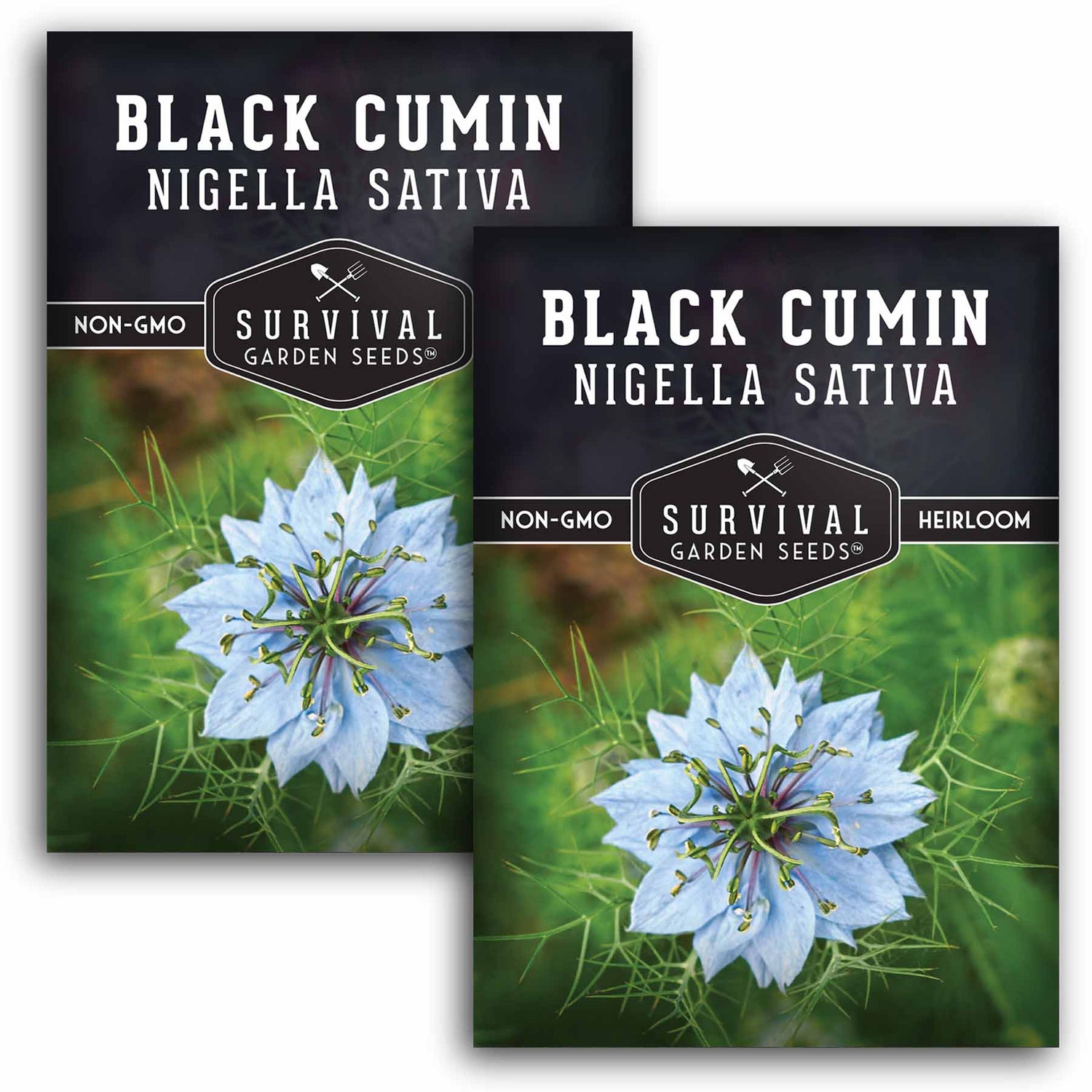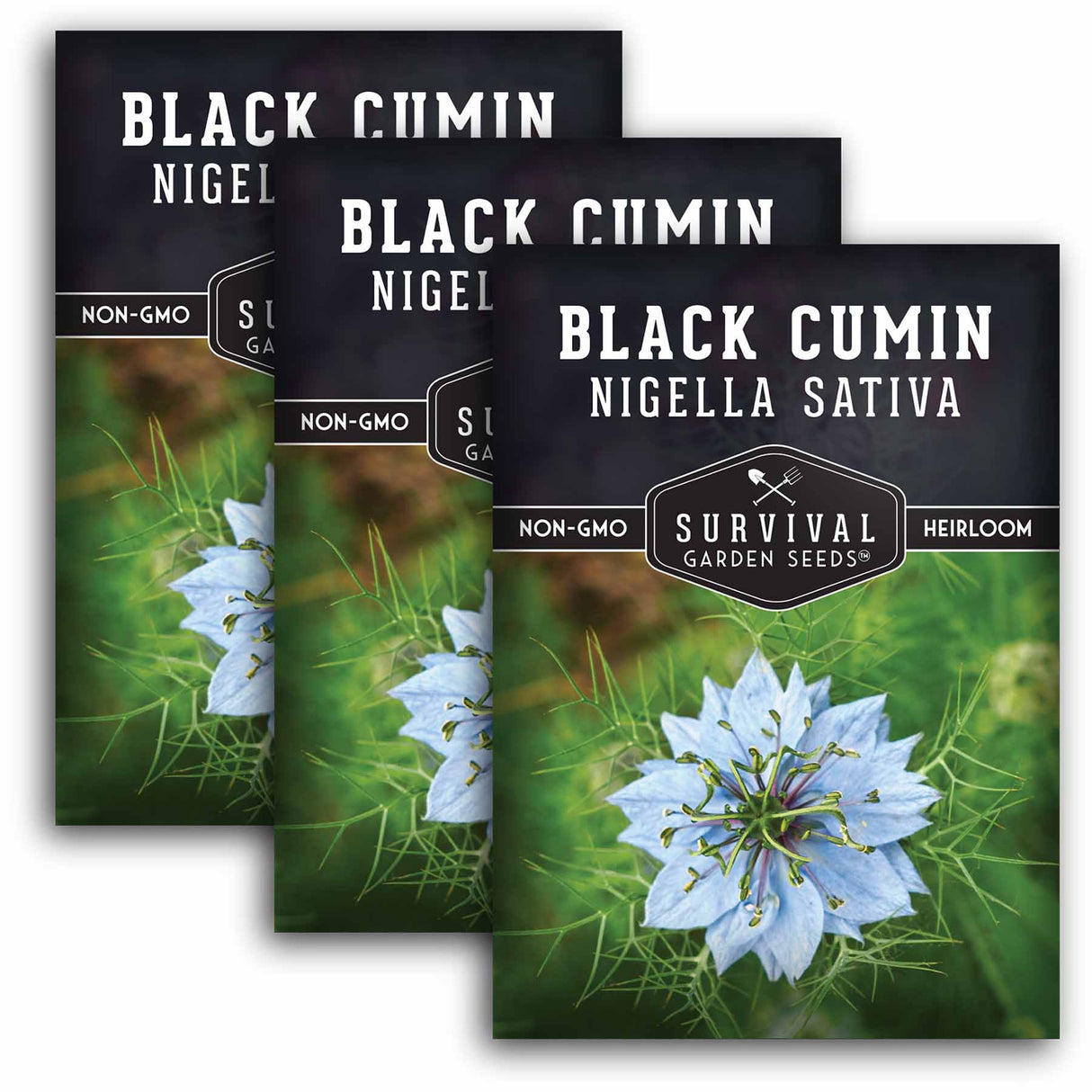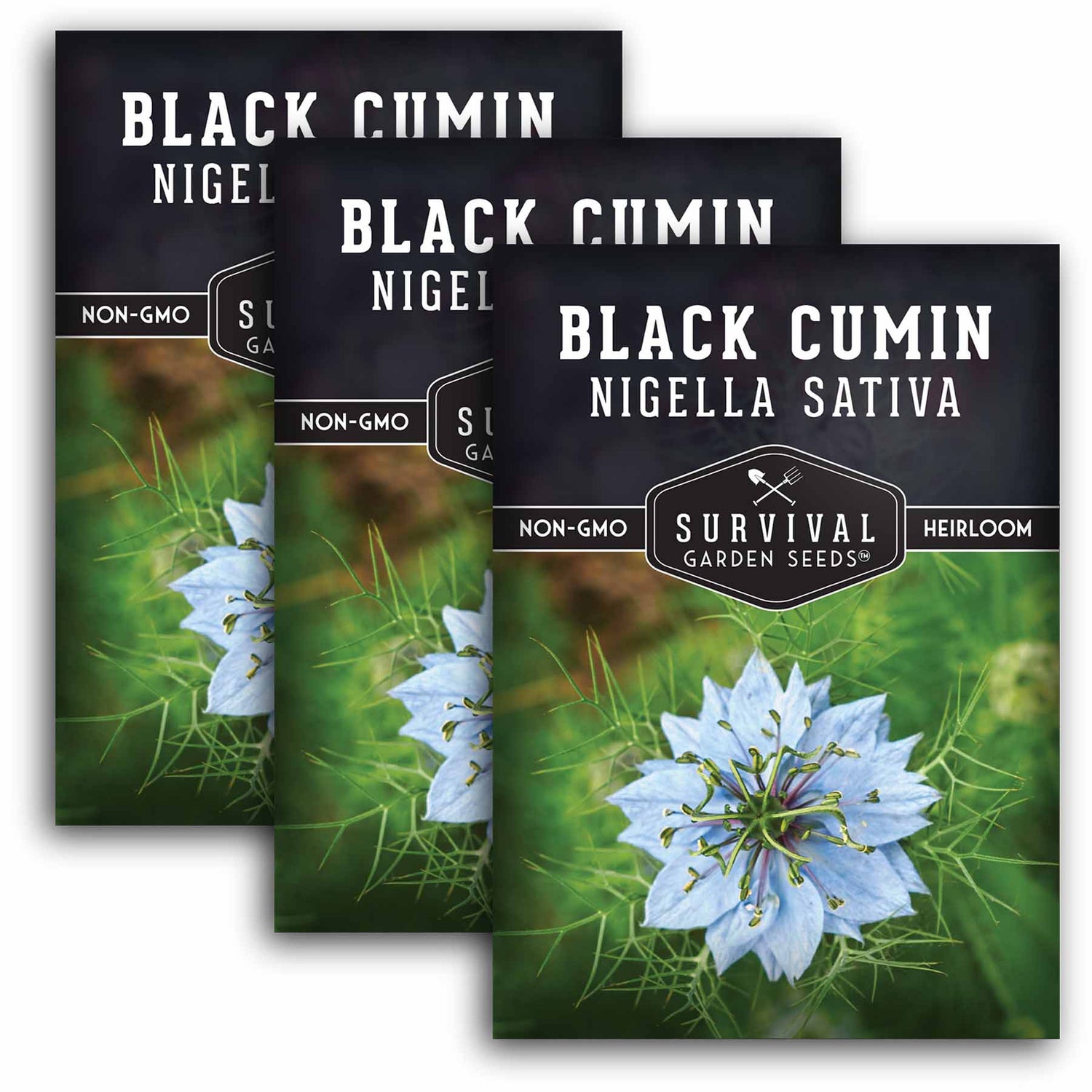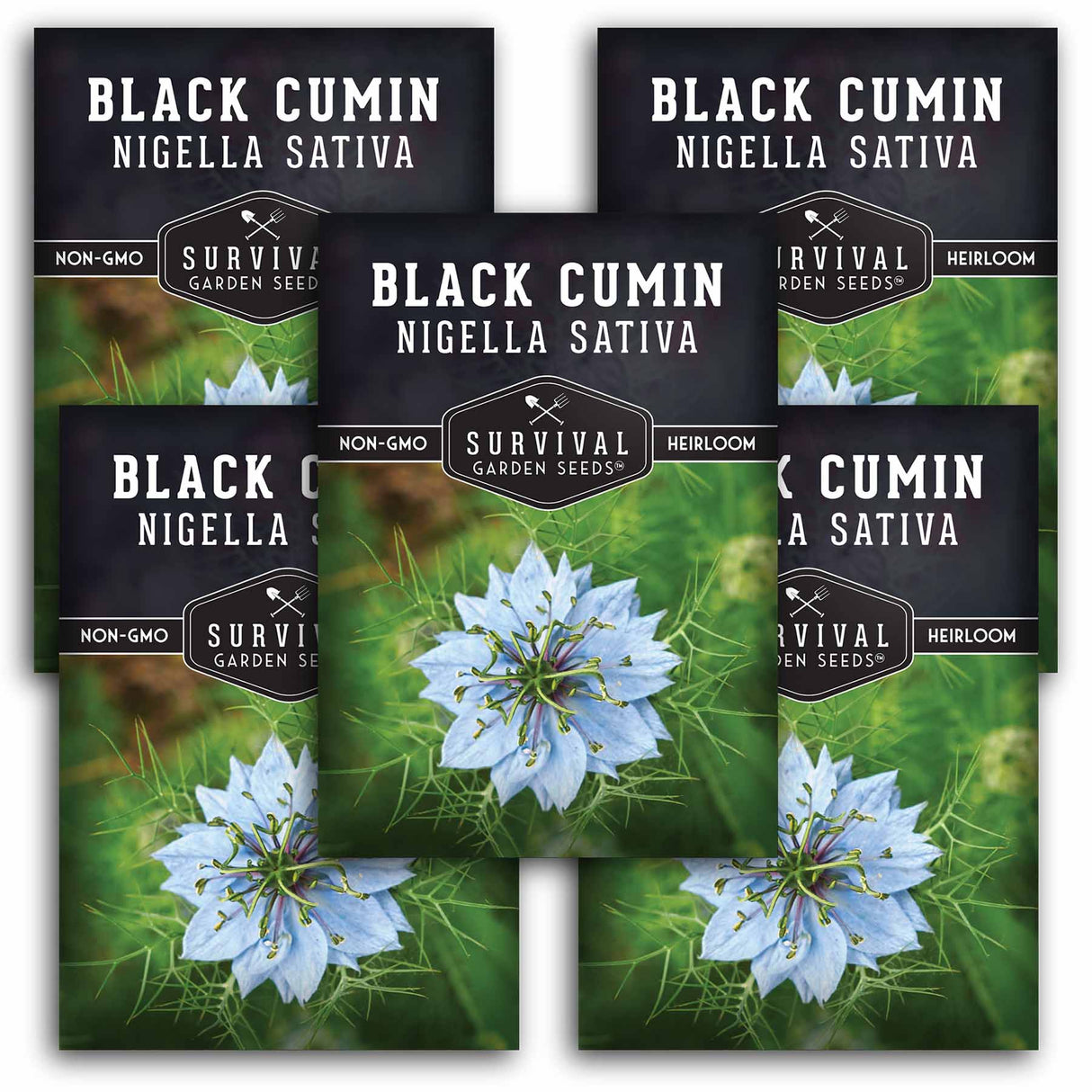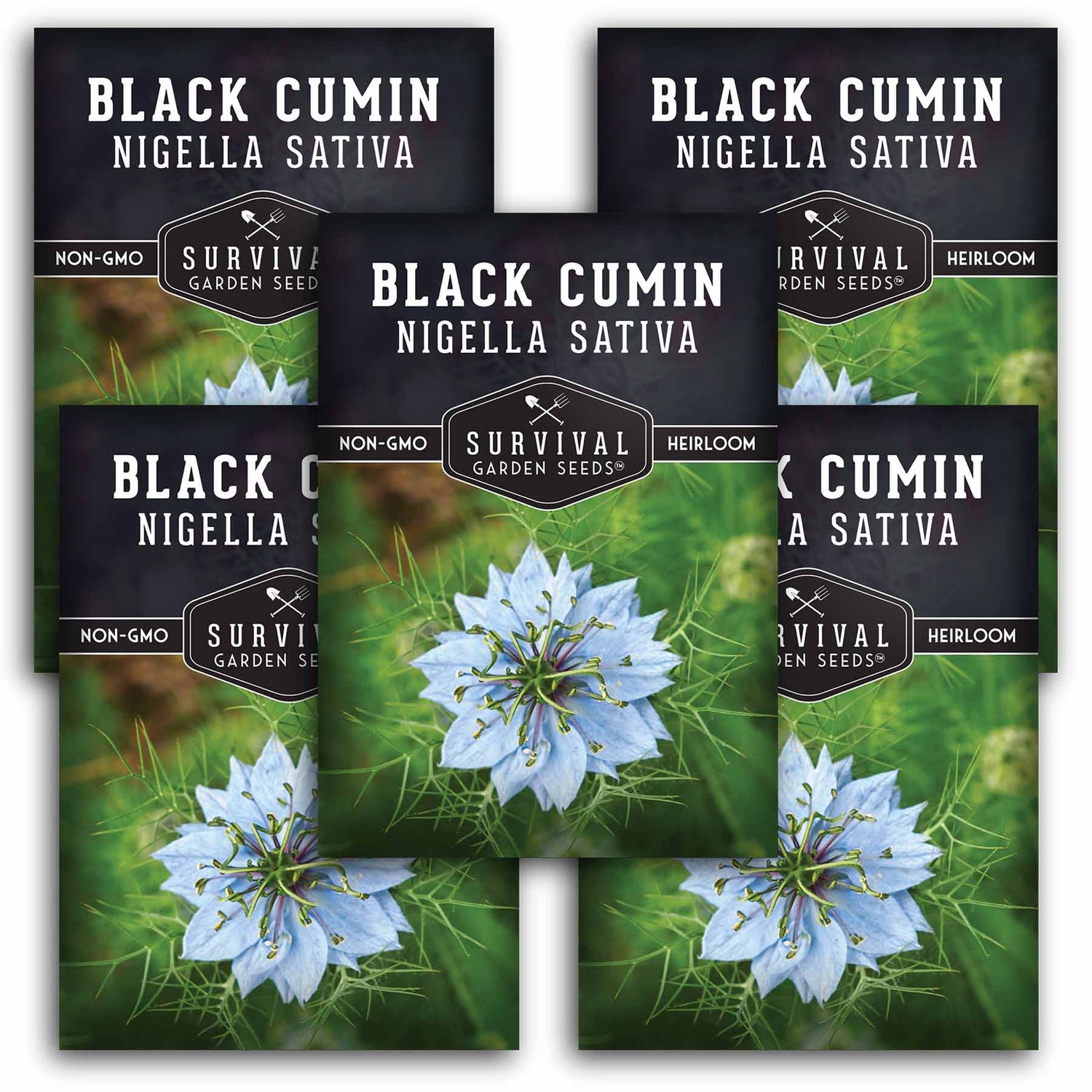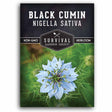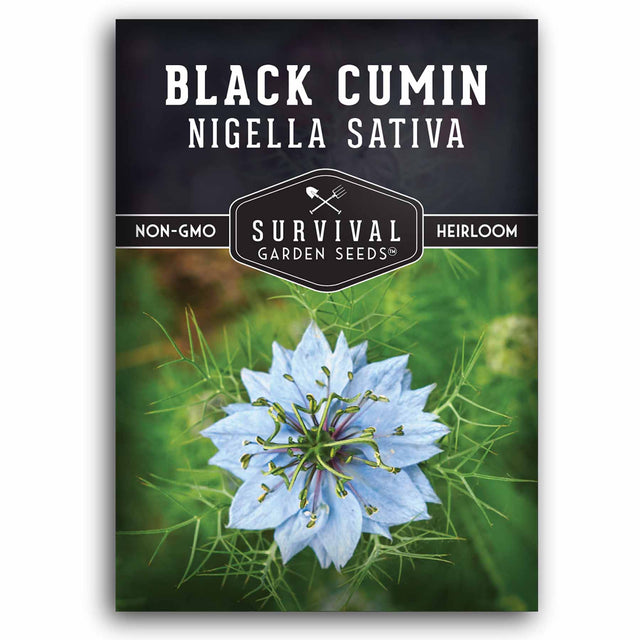Black Cumin Seeds (Nigella sativa) – Culinary & Medicinal Annual Herb with Blue Flowers, Drought-Tolerant
Heirloom - Non-GMO - Reliable Germination
Black Cumin Seeds (Nigella sativa) – Culinary & Medicinal Annual Herb with Blue Flowers, Drought-Tolerant - 1 Packet is backordered and will ship as soon as it is back in stock.
Couldn't load pickup availability
Grow your own Black Cumin with Nigella sativa Seeds from Survival Garden Seeds. This easy-to-grow annual herb is cultivated worldwide for its ornamental flowers and its highly valued seeds, which are widely used in cooking and traditional wellness practices. Native to parts of Asia, Black Cumin produces delicate white to sky-blue flowers that mature into decorative seed pods filled with aromatic, slightly bitter seeds prized for their distinctive flavor and versatility.
Easy-Growing, Productive, and Resilient:
- Annual herb that thrives in a wide range of climates
- Tolerant of poor soils and dry conditions once established
- Compact plants reach approximately 12 inches tall
- Attractive blue or white flowers followed by abundant seed capsules
Why Customers Love Black Cumin:
- Produces high yields of flavorful culinary seeds
- Drought resistant and low maintenance
- Grown for both ornamental beauty and practical harvest
- Suitable for garden beds, herb gardens, and containers
- Widely researched and traditionally valued plant
Culinary & Traditional Uses:
Black Cumin seeds are commonly used in Middle Eastern, Indian, and North African cuisines. The seeds have a peppery, slightly bitter flavor and are often sprinkled on breads, added to vegetable dishes, or ground into spice blends. Sometimes confused with black sesame or onion seed, Nigella sativa has its own unique taste and properties. When ground and mixed with water, the seeds form a gel that can be used as a plant-based binder or egg substitute in cooking.
How to Grow Black Cumin (Nigella sativa):
Sow seeds directly outdoors after the last frost, or start indoors for transplanting. Plant in full sun to partial shade with well-draining soil. Lightly cover seeds and keep soil evenly moist during germination. Once established, Black Cumin requires minimal watering and performs well even in dry conditions. Harvest seed pods once they dry on the plant and turn brown.
Net Wt. 1.5G
Heirloom Herb Seeds
All of our seeds are open-pollinated, non-GMO, heirloom varieties with tested germination rates
Specifications
Specifications
-
Botanical Name
-
Seasonality
-
Planting Zones
-
Light
-
Soil Temp for Germination
-
Germination Time
-
Planting Depth
-
Plant Size
-
Days to Bloom or Harvest
-
Growing Instructions
-
Seed Saving Instructions
-
Seed Count (approximate)
Payment & Security
Your payment information is processed securely. We do not store credit card details nor have access to your credit card information.
Why Choose Survival Garden Seeds
At Survival Garden Seeds, we believe in preparing today for tomorrow’s peace of mind. That’s why we offer only heirloom, non-GMO, and untreated seeds you can trust to nourish your family and support a sustainable lifestyle. As a family-owned American company, we’re committed to providing seeds that grow strong and true—helping you cultivate health, resilience, and beauty in your garden.
Frequently Asked Questions
Are your seeds heirloom and open-pollinated?
Are your seeds heirloom and open-pollinated?
Yes. All of our seeds are heirloom, open-pollinated varieties, which means they can produce seeds that grow true to type and are suitable for seed saving.
You can learn more about open-pollinated, heirloom, and non-GMO seeds in our Survival Garden Training blog.
Are your seeds non-GMO?
Are your seeds non-GMO?
Yes. All Survival Garden Seeds are 100% non-GMO. Our seeds are open-pollinated heirloom varieties and are never genetically modified.
Are your seeds treated with chemicals?
Are your seeds treated with chemicals?
No. Our seeds are completely untreated and free from chemical coatings, fungicides, or synthetic treatments.
How do I know my seeds are fresh?
How do I know my seeds are fresh?
Every seed packet includes a packed-for date, and we germination-test each seed lot before packaging to ensure high viability.
What is the shelf life of your seeds?
What is the shelf life of your seeds?
Most seeds remain viable for 3 to 5 years or longer when stored properly in a cool, dry place away from light and moisture.
In what USDA hardiness zones can I grow your seeds?
In what USDA hardiness zones can I grow your seeds?
Our varieties are selected to grow successfully across USDA Hardiness Zones 3 through 10. Each packet includes variety-specific planting guidance and germination tips.
